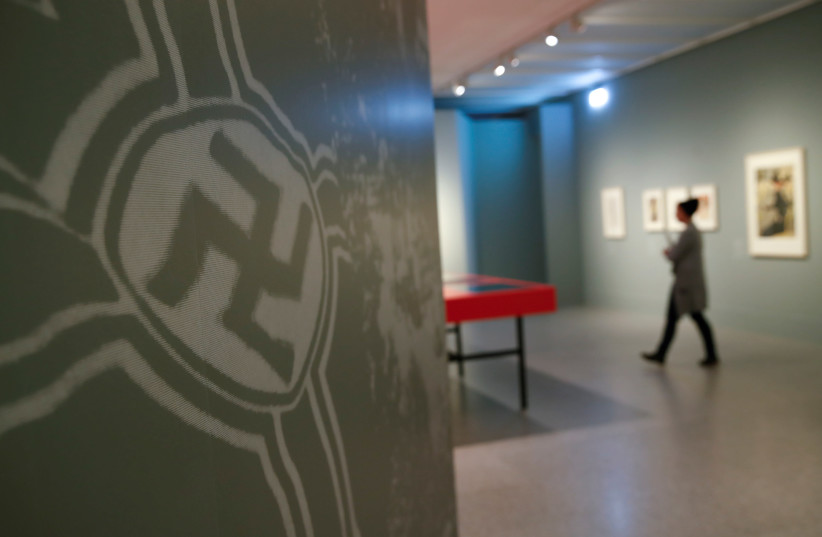For descendants of Jews persecuted by the Nazis, reclaiming art that was allegedly looted from their families can involve years-long court battles or negotiations with European officials.
But one museum curator in Germany, Matthias Weniger, is devoting his energy to restituting stolen art at his institution. Weniger is making it his personal business to return 111 silver objects at the Bavarian National Museum in Munich to the descendants of the Jewish families who owned the pieces before the Holocaust.
The pieces include ritual objects such as kiddush cups and Shabbat candlesticks that wound up in Nazi hands as the result of a 1939 law ordering Jews to surrender their precious metals and stones, often in exchange for just a fraction of their price. The law was one of a series of acts designed to strip Jews of their political and civil rights before the Nazi campaign of mass extermination began.
Most of the confiscated silver went to pawn shops, and much of it was ultimately melted down and used to aid the Nazi war effort. Some of the items that were not melted were returned to Holocaust survivors in the decades after the war, but only if they came forward to retrieve their stolen possessions.
“These silver objects handed in at the pawn shops are often the only material things that remain from an existence wiped out in the Holocaust,” Weniger told the Associated Press on Tuesday. “Therefore it’s really important to try to find the families and give back the objects to them.”

Restitution of looted art in Europe and the US
So far, Weniger has managed to return about 50 objects to relatives of their original owners, and he expects that he will be able to return the rest by the end of the year. His campaign comes amid attempts to speed up the process of restitution in Europe and the United States. The Netherlands recently decided to return multiple artworks to Jewish families, and a 2022 law in New York state compels museums to identify art in their possession that was looted during the Nazi era.
Weniger makes an effort to personally deliver the pieces to their owners’ descendants. Last week, he returned 19 silver pieces to families in Israel, including a goblet that was likely used as a kiddush cup, to Hila Gutmann, 53, and her father Benjamin Gutmann, 86, who reside near Tel Aviv.
The original owners of the cup were Bavarian cattle dealer Salomon Gutmann and his wife, Karolina, who were Benjamin Guttman’s grandparents. They were murdered by the Nazis in the Treblinka extermination camp. Their son Max, Benjamin’s father, survived because he fled to British Mandatory Palestine.
“It was a mixed feeling for us to get back the cup,” Hila Gutmann told the AP. “Because you understand it’s the only thing that’s left of them.”
Weniger is able to identify the objects’ provenance due to yellow stickers that the pawn shops affixed to the bottom of each piece in 1939. Those stickers have numbers that correspond to documents naming the original owners. Weniger also looks into the genealogies of the owners’ descendants, using databases, obituaries, phone books, LinkedIn, Facebook, Instagram and email addresses.
Last July, Weniger returned a partially gilded 300-year-old silver baptismal cup that had been stolen from a Jewish woman named Hermine Bernheimer in 1939. Bernheimer died in the Theresienstadt concentration camp in 1943. After her cup was returned to her descendants, they donated it to the Jewish Museum in Göppingen, the city in Germany where Bernheimer was born.
Weniger restores silver and family connections
Weniger provides families with his genealogical research as well as the restituted silver. Along with the cup, relatives of Hermine Bernheimer from around the world learned of each other’s existence for the first time.
“Hermine was my great-aunt,” Naomi Karp, a lawyer in Washington, DC, told The New York Times. “After I was told that the cup had been found, I learned I had about 30 relatives in the United States, Australia and Germany. I also learned that the cup was a baptismal cup. I have no idea how a Jewish family got a baptismal cup, but maybe it was a gift to them.”
Most of the descendants of the owners, Weniger said, live in the United States and Israel, but the museum is also in the process of returning silver pieces to France, the United Kingdom, Australia and Mexico.
“He’s really dedicated to it,” Hila Gutmann said of Weniger’s work to return the silver. “He treats these little objects with so much care — like they are holy.”
